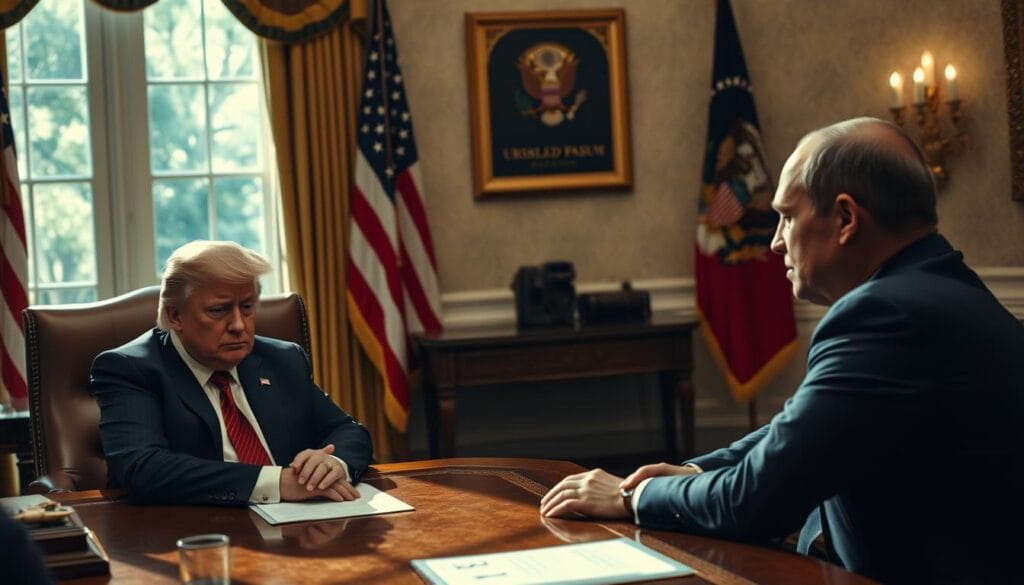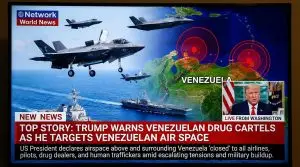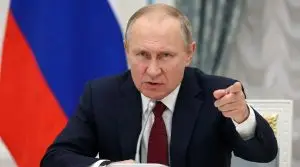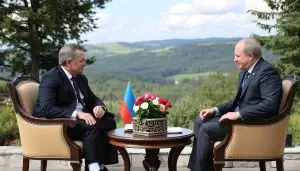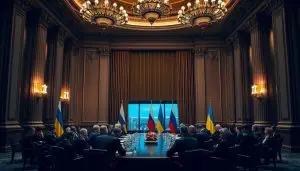Trump Declines Ukraine Missiles After Putin Talk
Discover why Trump declines Ukraine missiles following discussions with Putin. Delve into the diplomatic dynamics influencing this critical decision.
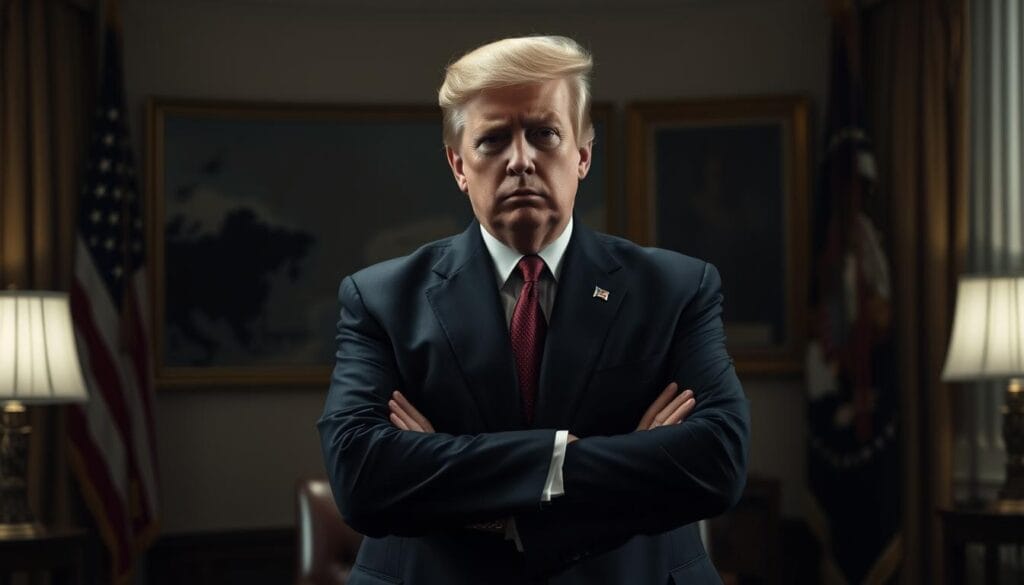
Trump Declines Ukraine Missiles
Click to summarize this article.
Trump Declines Ukraine Missiles: At a Zelensky White House meeting on Friday, President Donald Trump showed caution about sending Tomahawk missiles to Ukraine. He called them “very dangerous” and said, “Hopefully they won’t need it.” He framed this as part of a debate on long-range missiles to end the war.
After a call with Putin, Trump said the U.S. must avoid escalating the situation. Yet, he kept options open. He noted that Tomahawks are “a big deal” and America must protect its stockpiles.
Trump didn’t fully rule out sending missiles. He said the U.S. “may do it” if diplomacy fails. The cost, about $2.5 million per missile, and the need for Typhon launchers add to the stakes. Allies are weighing the decision, and Ukraine seeks European funding through NATO.
Ukraine believes a wider range would pressure Moscow. Tomahawks can strike from 1,000 miles, and Kyiv is under 500 miles from Moscow. The Pentagon has plans ready if ordered. Europe hopes a new procurement route can speed up U.S. military aid to Ukraine.
Reporting on the Zelensky White House meeting noted the Kremlin’s warning. They say such deliveries would be a “serious escalation.” Yet, advocates believe they could drive talks.
Trump’s stance has changed this year. He went from praising Putin to criticizing him after strikes on Kyiv. His message is mixed: avoid escalation, keep leverage, and see if pressure and talks can end the war. This balance is at the heart of the debate over long-range missiles.
Trump Declines Ukraine Missiles Key Takeaways
- Trump declines Ukraine missiles for now but leaves the door open if talks stall.
- Tomahawk missiles to Ukraine raise escalation risks and burden U.S. stockpiles.
- A recent Putin call with Trump coincided with warnings over long-range strikes.
- Kyiv seeks a range to pressure Moscow while pursuing NATO-linked funding paths.
- Tomahawks cost about $2.5 million each and require Typhon launchers.
- The Pentagon has contingency plans if the White House authorizes transfers.
- Debate centers on leverage: deterrence versus the risk of widening the war.
White House Signals Caution on Tomahawk Missiles amid Push for a Negotiated End to the War
The U.S. is cautious about using Tomahawks, seeing it as a test of timing. They aim to avoid escalating the Ukraine war while keeping the door open for talks. With Congress watching, the message is one of steady, not sudden action.
Trump’s rationale: escalation risks and protecting U.S. stockpiles
Donald Trump points out that Tomahawks are expensive and powerful. He fears giving them away could increase risks and strain U.S. supplies.
Supporters see this as a way to avoid backlash and keep U.S. power. Critics, though, say mixed signals could encourage Russia. This hesitation is covered in recent news, highlighting the missiles’ long range.
Zelensky’s message: more long-range capability to pressure Moscow
Volodymyr Zelensky wants Ukraine to have more long-range weapons. He believes this will increase costs for Russia and push it towards talks.
European supporters see Typhon launchers and funding as key to Ukraine’s success. They also see NATO’s procurement efforts as a way to support U.S. allies.
Context after the Gaza ceasefire and stalled Alaska summit with Putin
The debate on the Gaza ceasefire has shifted focus to Europe. The Alaska summit failed, leading to public posturing instead of progress.
In this tense environment, careful words and timing are critical. Reports detail how these actions align with diplomatic and security goals globally.
The Pentagon’s contingency planning and NATO procurement angles
The Pentagon is ready to act if given the green light. They consider inventory, training, and resupply, including Typhon launchers.
NATO’s procurement evolves, linking industry output to military needs. Analysts examine how range, cost, and policy interact, as detailed in briefings and peace-deal summaries that outline options without committing to outcomes.
Trump Declines Ukraine Missiles After Putin Talk
A recent shift came after a call from Putin to Trump. This call highlighted the risks, costs, and timing. Aides say the goal is to keep leverage in Ukraine talks while avoiding steps that lock in outcomes.
Putin’s outreach and the “Trump strategy” of flattery and delay
Moscow’s outreach was framed as cooperative, yet it pressed hard on missiles and sanctions. Observers describe a Trump strategy of flattery and delay. This approach uses upbeat signals and slow-roll deadlines.
This strategy feeds into a Hungary meeting plan. It aims to draw in Vladimir Putin and Volodymyr Zelensky for staged bargaining.
All of this unfolds as live war updates track battlefield strikes and diplomatic feints. It shows how messaging can set the tempo for talks.
Leverage over talks: keeping Tomahawks “on the table” without commitment
The camp around Trump stresses leverage in Ukraine talks by keeping Tomahawks on the table. This stance signals pressure while preserving maneuver. It also holds down immediate costs tied to Typhon launchers and per-missile price tags.
Maintain pressure, but pay later, is the quiet logic. It invites concessions while reserving a sharper option if the deal space opens.
Quotes signaling mixed posture: from “hopefully they won’t need it” to “we may do it”
Mixed signals quotes have become a feature, not a bug. Trump has called Tomahawks “vicious” yet adds, “hopefully they won’t need it.” He pairs that with “we may do it,” a line that keeps partners alert and adversaries guessing.
“We want the war to end quickly, but we won’t give up our leverage.”
That blend of caution and threat aims to slow escalation while keeping options alive.
European hopes for Tomahawk deterrence versus Kremlin warnings of “serious escalation”
European deterrence hopes rest on range and precision that can hit strategic nodes. Kyiv argues the threat alone can bend talks. The Kremlin escalation warning counters that any transfer would cross a line and widen the war.
Inside this push-pull sits a Hungary meeting plan and parallel channels. Aides cite reporting on the political feud to frame the stakes.
| Factor | Purpose | Signal to Allies | Signal to Kremlin |
|---|---|---|---|
| Tomahawks on the table | Maintain bargaining power | Deterrence is ready if needed | Costs will rise if talks stall |
| Mixed signals quotes | Preserve ambiguity | Flexibility for NATO planning | Uncertain timelines and outcomes |
| Hungary meeting plan | Create a venue for trade-offs | Diplomacy first, force in reserve | Path to reduce risks if progress |
| Kremlin escalation warning | Raise the cost of transfer | Stress test unity and resolve | Deter shipment without concessions |
| New York Times reporting | Context for strategy and timing | Explains delays and restraint | Highlights focus on negotiation |
Trump Declines Ukraine Missiles Conclusion
The future depends on Ukraine war talks and U.S.-Russia diplomacy. The missile transfer decision is up in the air. It’s not approved but not ruled out yet. This keeps the Tomahawk debate alive as a bargaining chip.
NATO and the Pentagon are planning carefully. They want to keep options open without rushing into anything. This approach helps manage the risk of escalation.
Some say long-range missiles could change the game. They could target key areas and disrupt Moscow’s plans. But others fear it could make the war worse and cost more.
This debate is at the heart of the talks. The goal is to find a way out through diplomacy. Flexibility is key, and the message is clear: deterrence matters.
Right now, the focus is on careful planning. The administration wants a negotiated solution but keeps options open. European allies are looking into funding, and Washington is considering its next steps.
The next steps will depend on future talks and the mood between world leaders. A cautious approach to missile transfers could lead to peace. The goal is to balance NATO’s actions with careful diplomacy.
It’s all about making the right moves. The stakes are high. See the Tomahawk debate for the latest on this complex issue.
Trump Declines Ukraine Missiles FAQ
Why is the White House cautious about sending Tomahawk missiles to Ukraine?
President Trump worries that Tomahawks could lead to a big escalation. He also wants to keep the U.S. missiles for its own defense. The White House is careful to balance these concerns before talks with Putin and Zelensky.
What is President Trump’s current position on providing Tomahawks?
Trump hasn’t agreed to send Tomahawks yet. He keeps the option open as a bargaining chip. He hopes Ukraine won’t need them but is ready to send them if necessary.
How does President Zelensky view long-range strike capabilities?
Zelensky wants more long-range options to pressure Moscow. He believes hitting strategic targets in Russia would make the Kremlin pay more attention to negotiations.
What role did the Gaza ceasefire and the Alaska summit play in this decision?
After announcing a Gaza ceasefire, Trump turned his focus to Ukraine. The Alaska summit with Putin didn’t lead to any breakthroughs. This made diplomacy and caution in weapons transfers more important.
What planning has the Pentagon undertaken?
The Pentagon has made plans to sell or transfer Tomahawks if needed. Each missile costs about .5 million and needs Typhon launchers. These details affect the timing, logistics, and budget of any transfer.
How could NATO and European financing affect a possible transfer?
Ukraine hopes to use a new NATO channel to get European funds for American systems. This could help finance Tomahawks and Typhon launchers, giving Ukraine more options if U.S. policy changes.
What did Putin raise in his call with Trump?
Putin congratulated Trump on the Gaza ceasefire but really talked about missiles. Reports say Trump used flattery and business talks to avoid sanctions without changing Russia’s actions.
How is Trump using Tomahawks as negotiating leverage?
Trump keeps Tomahawks as an option without committing. This strategy aims to prevent Russian escalation and shape talks without immediate risks.
What quotes show the administration’s mixed posture?
Trump called Tomahawks “vicious” but hopes Ukraine won’t need them. He also said he might send them if the war doesn’t end. This shows both caution and a readiness to act.
What are European hopes and Kremlin warnings regarding Tomahawks?
Europeans see Tomahawks as a deterrent against Russia. Moscow warns that sending them would be a serious escalation.
How close are possible targets, and what is the range of Tomahawks?
Tomahawks can hit targets over 1,000 miles away. Kyiv is about 500 miles from Moscow, making Russian targets reachable with the right systems and permissions.
What meetings are expected next?
Trump plans to meet Putin and possibly Zelensky in Hungary soon. Decisions on missiles will depend on these talks and efforts to end the war.
How has Trump’s stance evolved over the year?
Trump paused support for Ukraine in January and praised Putin. After Russia’s attacks on Kyiv in May, he called Putin “absolutely CRAZY.” He voiced disappointment in July and later suggested sending weapons via NATO while staying cautious.
What systems would Ukraine need to operate Tomahawks?
Ukraine needs Typhon launchers and training to use Tomahawks. They also need to integrate targeting and secure logistics. These requirements affect the timing and how well Ukraine can work with NATO.
Could Tomahawks change Putin’s calculus?
Zelensky and Europeans think Tomahawks could increase pressure on Russia. They believe it could force Russia to talk. The U.S. is weighing this against the risks of escalation and its own defense priorities.

